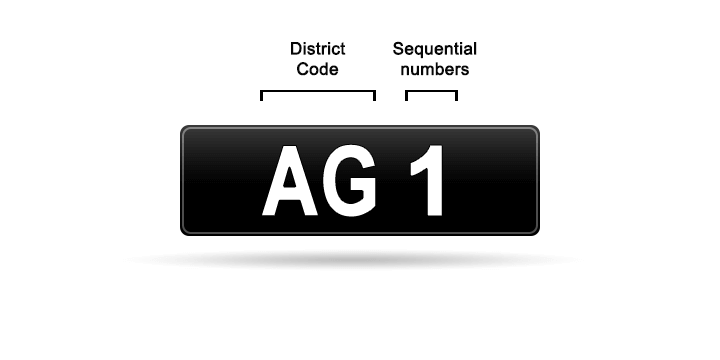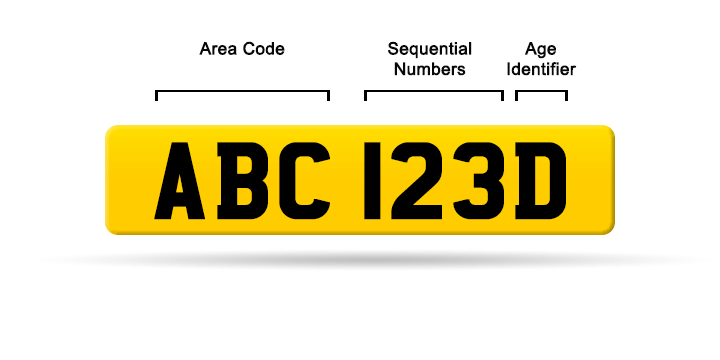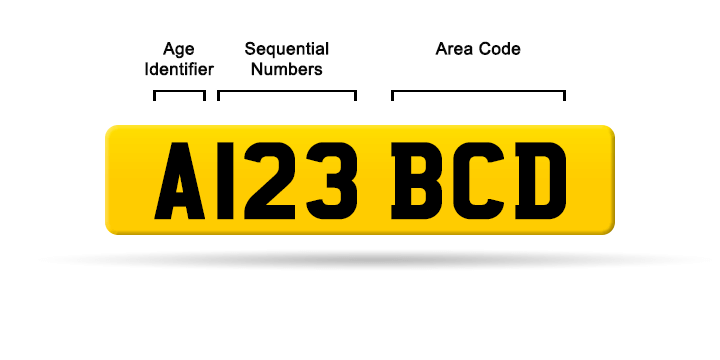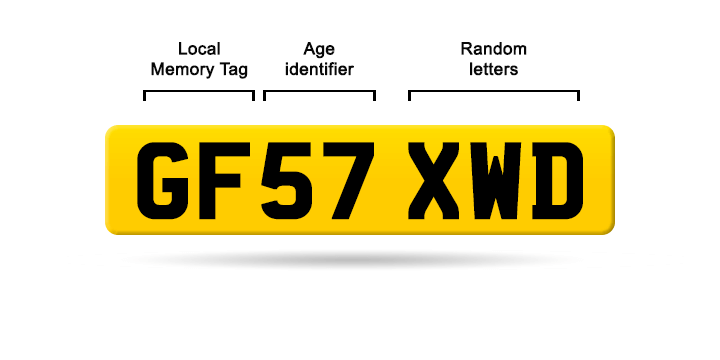A historical overview of car registrations, including an explanation of formats.
When it became obvious that the motor car was here to stay, and that its popularity was rapidly growing, the British government took various steps to introduce regulation and control. It also recognised the need to be able to identify and trace vehicles in the event of accidents, their being used in the execution of crime or their being stolen.
One effect of the 1903 Motor Car Act (which actually took effect at the beginning of 1904) was to require all vehicles on British roads to be registered and to display registration plates, which would enable them to be easily identified. So, although the first car registrations were actually issued in 1903, the legal requirement for vehicles to display them didn't take effect until 1904.
Several numbering systems have been implemented since 1903, the first of which operated until 1932.
The original car registrations system
Things got off to a fairly uncertain start in 1903, with various inconsistencies and changes to the original car registrations numbering system appearing in some regions. However, it is generally true to say that the very early number plates consisted of a letter code denoting the issuing authority, and a sequential identification number. Unlike more recent versions, this first generation of number plates had no year identifier.
Dateless originals
Dateless 1903 - 1962

Early number plates were simple; a one or two letter region code and a unique number to identify the vehicle.
This original car registrations series included the combinations A1-YY9999. The letter component (either single character or a pair) identified the local authority in whose area the vehicle was registered (A, for example, indicated a vehicle registered in London). The number component simply incremented and provided the unique identification for the bearer vehicle within the area shown by its letter code.
In England and Wales the area letter codes were assigned alphabetically according to the size of the population in each authority's area, hence crowded London's allocation of the 'A' designation.
In Scotland and Ireland the system worked a little differently. Registration in those regions began with the letter S in Scotland and I in Ireland. These national identifiers would be followed by another letter which, like the English and Welsh versions, specified the local registering authority, and then by the sequential ID number.
In the areas of greatest demand, yet another extension was introduced within a decade, this time using the range 1A -9999YY.
New letter codes
Upon reaching 9999 and thus exhausting its available numbers, an authority would be given another two-letter mark which would enable them to continue issuing car registrations. These new letter codes, however, followed no predictable sequence or pattern, as they were allocated ad hoc to authorities that requested them.
Extended and reversed
In 1932 the scheme was extended due to the shrinking number of available combinations. The extension consisted of three-letter/three-number combinations in the range AAA1 to YYY999. Further extensions to the scheme were required in some areas by the 1950s, again due to demand depleting the pool of remaining numbers. In these areas, the format was reversed so that the number component preceded the letter component.
Introducing the Age Identifier
Suffix 1963 - 1982

Suffix series with issuing authority letter code, unique identification numbers and suffix year letter.
Prefix 1983 - 2001

Prefix series with prefix year letter, unique identification numbers and issuing authority letter code.
Current 2001 - present

The current format (infix) contains a Local Memory Tag, an age identifier and a unique series of identification letters.
History shows that demand has often grown at a rate not foreseen by those who devised these registration-numbering systems. While the current system should remain operable until 2049, only time will tell if, in reality, it offers sufficient permutations to satisfy demand for new car registrations. Learn more about car registration history through the years.
Share this...